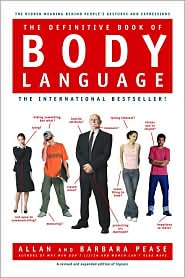The Secrets of Understanding Body Language
by Stephen Borgman, myaspergers.netNovember 30th -0001
 Daniel Wendler was depressed, lonely, and anxious around other people.
Daniel Wendler was depressed, lonely, and anxious around other people.
The he was diagnosed with Aspergers.
Instead of being upset, he was elated!
I spent the next ten years reading books on social interaction, talking to relationship experts, seeking advice everywhere I could and applying my new social skills with everyone I met. My study paid off. I grew from a lonely, bullied boy to a confident, charismatic man. Relationships, which were once a source of fear and stress for me, are now the most important part of my life, and I love meeting new people. Source: Improve Your Social Skills.
Be Like Sherlock Holmes and You’ll Unlock The Secrets of Understanding Body Language
It’s true. Sherlock Holmes had a keen mind that set him apart from the average detective. However, he pointed out to his assistant, Watson, that most people “see, but do not observe.”
Joe Navarro, author of What EveryBody Is Saying, assures his readers that they can learn to understand body language.
It’s not easy. But it is possible.
Decide and commit to become a student of non-verbal communication.
According to Dr. Daniel Goleman, author of Emotional Intelligence, those who can effectively read and interpret nonverbal communication, and manage how others perceive them, will enjoy greater success in life than people who lack this skill.
Here are some assorted “secrets” to understanding body language:
Body Language Is A Big Deal
Nonverbal communication, often referred to as nonverbal behavior or body language, is a means of transmitting information – just like the spoken work – except it is achieved through facial expressions, gestures, touching (haptics), physical movements (kinesics), posture, body adornment (clothes, jewelry, hairstyle, tattoos, etc), and even the tone, timbre, and vloume of an individual’s voice (rather than spoken content). Nonverbal behaviors compreis appximately 60-65 percent of all interpersonal communication. ~Joe Navarro, What EveryBody Is Saying.
Eyes and Eyebrows Signal Like or Dislike
An arch of the eyebrows indicates a genuine expression of like.
On the other hand, a person who squints his eyes is demonstrating eye-blocking. Eye-blocking is a nonverbal behavior that can occur when we featl threatened and/or don’t like what we see. This can include squinting, and closing or shielding our eyes to protect the brain from seeing undesirable images and to communicate our disdain toward others.
Pursing of the Lips Often Signals Disagreement
Joe Navarro consulted with a business client who was negotiating an expensive contract with another client. Whenever Joe noticed the other client pursing his lips, he would nudge his client so that the client could stop and ask more questions to hammer out possible objections in the contract. By clearing up these possible areas of disagreement, Mr. Navarro calculates he saved his client 3.5 million dollars!
Calm Versus Stressed
A calm face will show relaxed eyes and full lips.
A stressed face is tense and slightly contorted, eyebrows are knitted, and the forehead is furrowed.
Study YouTube, movies, and people in public.
Be aware that not all YouTube videos come from the best sources. However, you can find some helpful resources like Gestures and Body Language Tutorial (free), and the Seven Universal Facial Expressions.
LinguiSystems, a speech and language therapy resource site, has some helpful resources for helping people with autism better understand non-verbal expressions.
Watch movies and study expressions. Perhaps watch with someone not on the spectrum so that you can ask questions and absorb the knowledge that way.
Observe your non-Aspergers friends and family to get a better understanding of their particular body language.
The Definitive Book of Body Language is another well rated book by over 200 reviewers. (I’ll admit I haven’t read this one). It appears to be even more comprehensive than Mr. Navarro’s book.

Finally, here are three articles I found helpful:
Understanding Body Language; Body Language; and How To Read Body Language
What are some of your challenges, solutions, and resources for better understanding body language?
Image credit: elnur / 123RF Stock Photo
Original Page: http://www.myaspergers.net/the-secrets-of-understanding-body-language/
Shared from Pocket
No comments:
Post a Comment